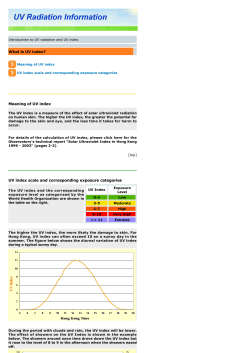
2 w o l
2 Why the Observatory is on La Palma The Roque de Los Muchachos at night, showing the stars wheeling around the celestial pole. Credit: Manel Soria. There’s a really simple reason why fifteen telescopes perch on the top of La Palma. It’s one of the three best places in the world for astronomy. A modern telescope could see the equivalent of a candle on the moon, so obviously they want to be well away from city lights. Even more obviously, they want to be somewhere that doesn’t get many cloudy nights. Much less obviously, they want to be somewhere the stars don’t twinkle. This happens when the air’s turbulent. It’s pretty, but it really messes up your view. Looking at stars through turbulent air is like looking at something on the bottom of a stream. Even if the water’s clean, objects at the bottom appear to wibble around until it’s almost impossible to see what you’re looking at. To a lesser extent, that happens with any atmosphere. It’s called astronomical seeing, and it’s exactly what astronomers don’t want when they look at the stars. How turbulence distorts your view. The author’s toes in a rock pool, with still and turbulent water. Much the same thing happens when you look at stars and galaxies through Earth’s atmosphere. Why the Observatory is on La Palma La Palma lies in the trade winds, only about 590 km north of the tropics. This means that for most days of the year, the wind blows from the north east, reaching the island after a thousand miles of ocean. When it hits the land, it’s forced upwards, and cools. This makes any moisture condense into clouds, usually between 1,200 m and 1,800 m - well below the observatory. Most days, from the Roque de los Muchachos, you can look down on a sea of clouds, and up to a perfect blue sky. Any dust or pollution is usually trapped in these clouds too, leaving very clean, dry air at the top of the mountain. Even better, the airflow over the peak is very smooth. In technical terms, it hardly wibbles at all. There are three small telescopes, called DIMMs (Differential Image Motion Monitors) operating at the ORM, to measure astronomical seeing at different places in the observatory. The prototype DIMM was developed by the IAC in collaboration with the Department of Astrophysics of Nice. The DIMM consists on a 20 cm telescope with two smaller apertures, one with a little glass wedge, producing twin images of a star. So any movement between the two images of the star must be due to the air above the DIMM, not to the telescope wobbling. STAR OPTICAL WEDGE DIAPHRAGM TELESCOPE IMAGES OF STAR One of the DIMM telescopes which measure astronomical seeing. How a DIMM works. Any movement between the images is due to turbulence in the atmosphere. There are three places in the world which are great for dark, cloudless nights and non-turbulent skies. La Palma is one of them, and the least turbulent of the lot. (The other two are the peak of Mauna Kea, Hawaii, and the Atacama Desert in Chile.) Why the Observatory is on La Palma The problem is to keep it that way. It’s pretty hard to see La Palma on the photo taken from the space shuttle – it’s the dim outline, right at the top of the frame. At the bottom, Gran Canaria and Tenerife shine out like beacons; you can see the outline of the little island of Gomera; but where’s La Palma? Well you can see the capital, Santa Cruz, and if you really try, you can see the faintest line of light up to Los Sauces. And you can see Los Llanos on the west of the island, sort of, but where’s the rest of the island? It’s invisible. And please note – this photo was taken before midnight. They turn off floodlights at midnight. When the observatory moved here, the astronomers asked for, and got, a local law known as the Sky Law, which covers aviation routes, atmospheric pollution, electromagnetic radiation and crucially, exterior lighting. See 7.1 Sky Law One result is that La Palma is a great place for amateur astronomers, too. Even in a resort, people notice how many more stars you see here, compared to almost any English town or city. Here’s a picture of M51 taken by my friends in Franceses with an 70mm amateur telescope on their first night’s astronomy since they moved here. Of course there’s a lot of skill involved too. But they used to live in Streatham (south London), and no amount of skill would produce that kind of result there. And the sky at the Roque itself is amazing. NASA photo of the north western Canary Islands taken from the space shuttle. La Palma is somewhere at the top of the photo. Galaxy M51 taken with a 7 cm telescope by Theresa Davis in Franceses, Garafía. Next page: The sky over the southern tip of La Palma. In most places, night photos have orange clouds due to light pollution - but not La Palma. Manel Soria
© Copyright 2025





















